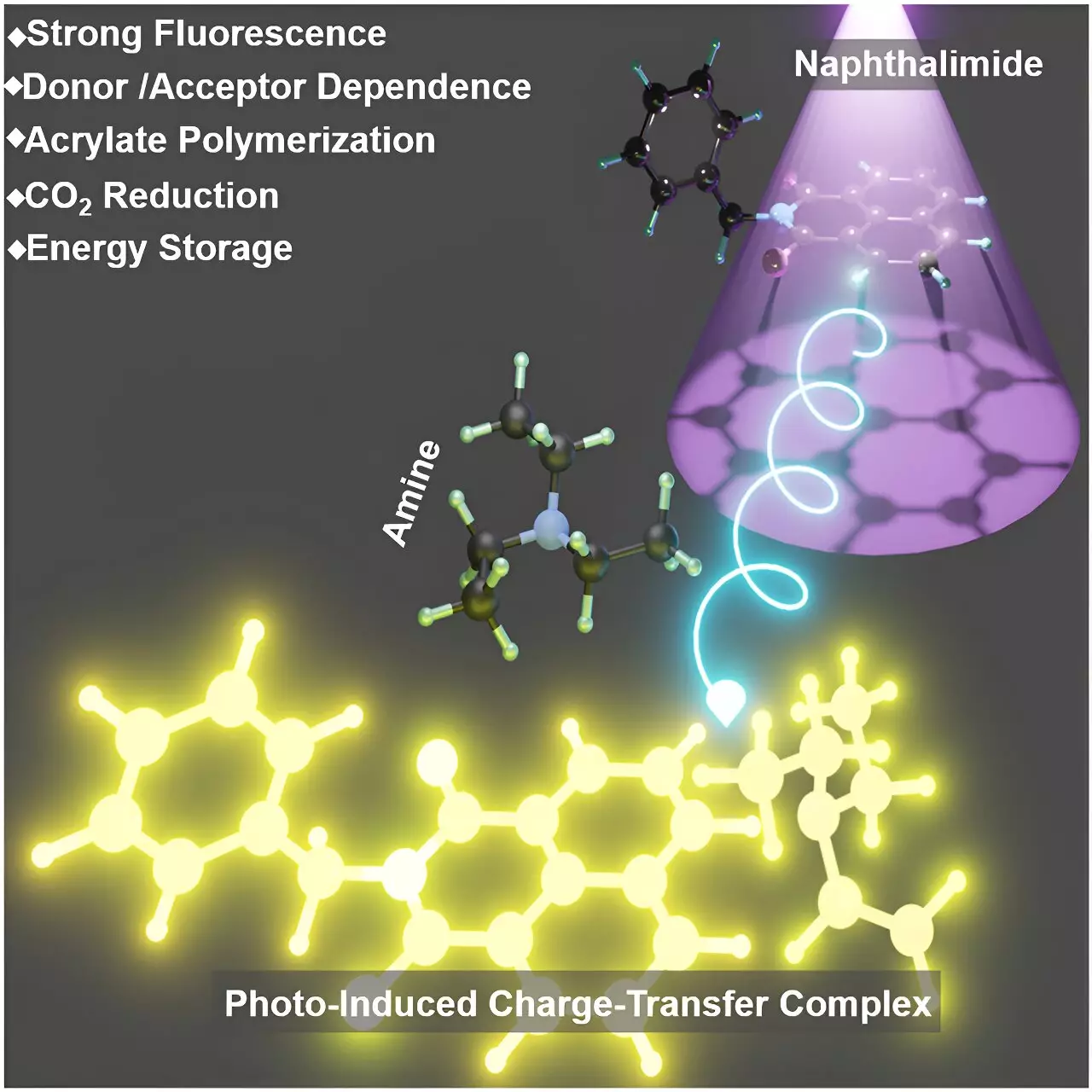In a groundbreaking study led by Prof. Zhang Guoqing from the University of Science and Technology of China (USTC), a highly reactive photo-induced charge-transfer complex (PCTC) between amine and imide has been discovered. This discovery sheds light on the complex photochemical processes involved in charge transfer between molecules, with significant implications for various applications in organic synthesis and energy conversion.
The research team found that aromatic imides and alkyl amines, which initially did not interact significantly in their ground state, formed stable PCTCs when exposed to UV light. This interaction led to the creation of a fluorescent complex similar to a Meisenheimer complex. Through the use of advanced spectroscopic techniques, such as high-resolution mass spectrometry and time-resolved spectroscopy, the researchers were able to confirm the formation and stability of these complexes.
Experimental Observations
By conducting a series of experiments, the researchers were able to uncover the formation mechanism of PCTCs. They observed that the interaction between naphthalimide and triethylamine in solution did not result in significant changes in the absorption or emission spectra without light exposure. However, upon UV irradiation, new spectral features emerged, indicating the formation of the PCTC. These features included a distinct absorption band and enhanced fluorescence, which were absent in the individual components.
The discovery of PCTCs has opened up a range of potential applications, including the initiation of polymerization of acrylic esters under UV light. This demonstrates the potential of PCTCs in creating new polymeric materials with unique properties. Furthermore, the complex has shown efficacy in reducing carbon dioxide, a crucial reaction for addressing environmental challenges and developing sustainable energy sources. One of the standout features of PCTCs is their ability to store UV energy and release it in the dark, enabling processes that typically require continuous light exposure to proceed in the absence of light.
The discovery of highly reactive PCTCs between amines and imides under UV light not only enhances our understanding of photo-induced charge-transfer processes but also paves the way for practical applications in polymer science, environmental technology, and energy storage. This research opens new avenues for innovation and highlights the importance of exploring complex photochemical processes for real-world applications.



Leave a Reply